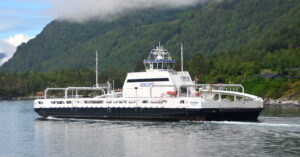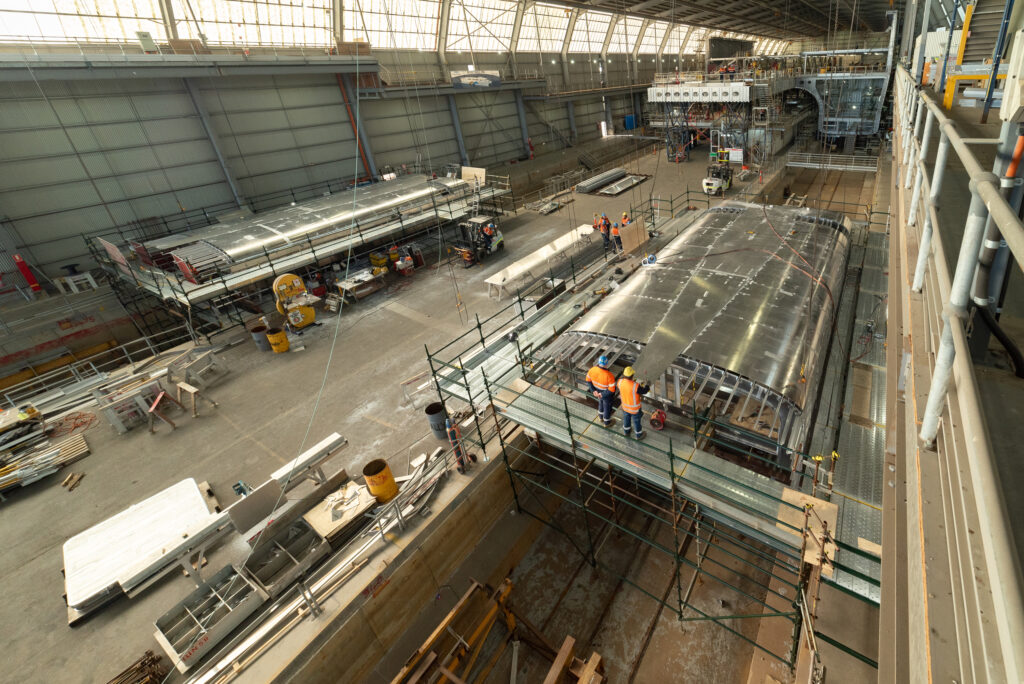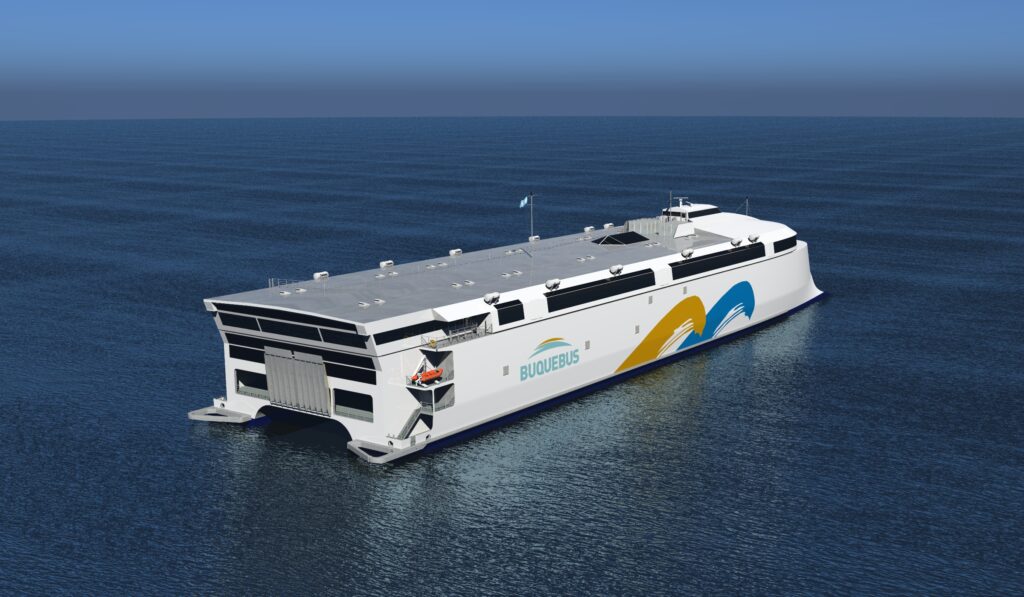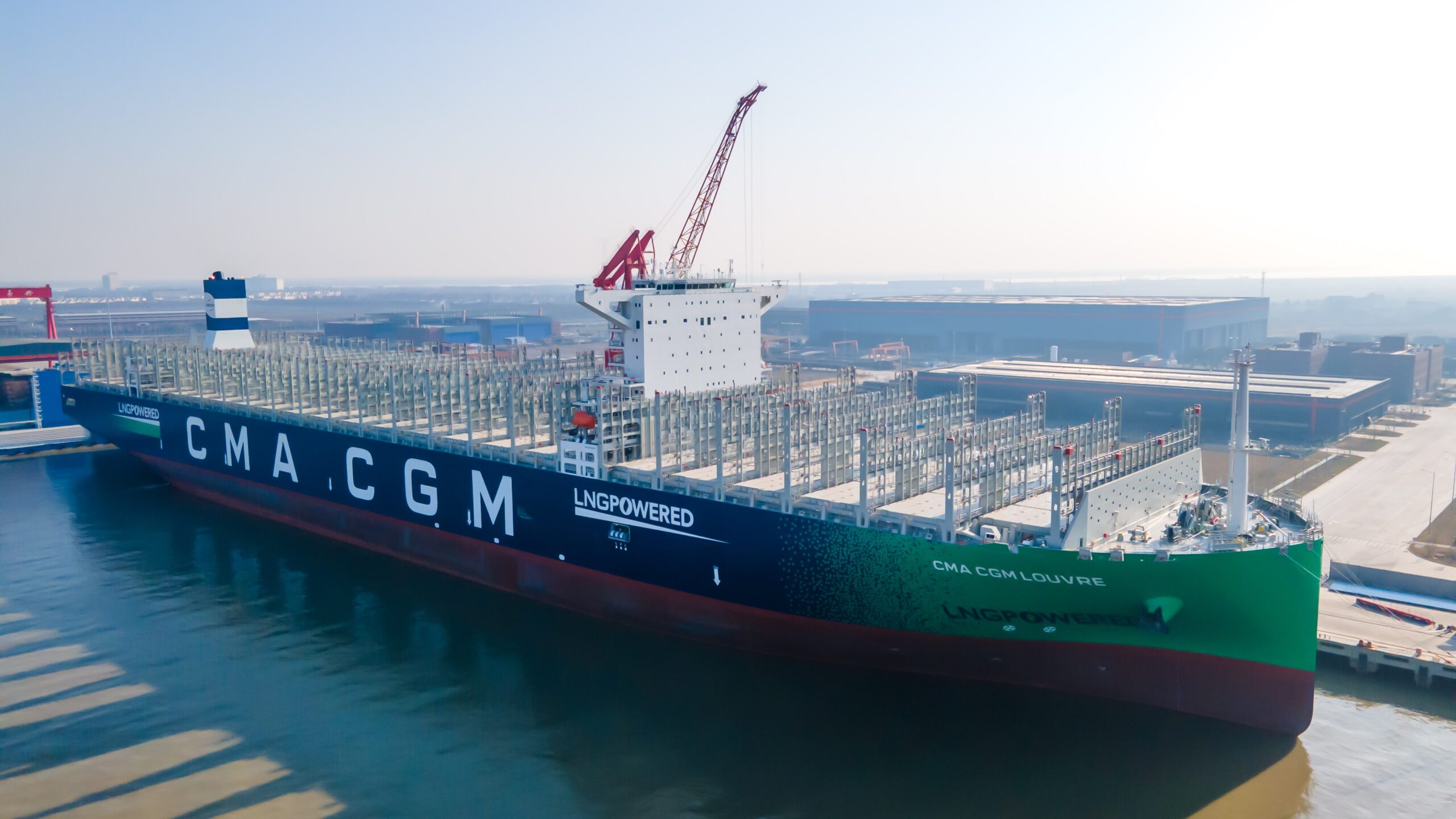Significant advances in reducing size of battery packs while increasing power density means batteries are 40x more powerful than a decade ago
Battery powered ships are getting bigger, and the limit has yet to be reached. Technology advances in energy storage mean that a delayed 2,100 pax high speed catamaran ferry for South America will now not be built with LNG, but instead with huge battery packs, which will likely make it the biggest battery powered ferry in the world.
Ferry operator Buquebus operates a high-speed ferry link between Uruguay and Argentina and originally talked with specialist shipbuilder Incat in Australia about a new LNG powered ferry. But this was just as the COVID-19 pandemic hit, so with existing vessels put into layup and an uncertain future, the order was put on hold.
In the meantime, battery technology seems not to have suffered, and has moved on. So with the South American operators operations back up and running and the need for a new vessel needing to be realised, the vessel, hull number 096, has been redesigned, with Incat bringing in specialists from Wärtsilä and Corvus to help Buquebus take a leading position with am emission free vessel.
That amount of battery power says Halvard Houso, at Corovus Energy the company supplying the energy storage system for vessels, now weighs only about 240 tonnes , half of what such a power system would have eighed just eight years ago, had it even been available. Corvus technology has advanced he said to a point that the new systems the company offers- it’s called Dolphin NextGen, far surpasses its original market offering.

To put this into context he points to the MV Ampere, a small Norwegian road ferry brought into service just over eight years go, in 2015. Ampere is one of the first modern all electric passenger vessels. With a battery capacity of 800kW and a speed of 10 knots, the 79 m vessel has the space for 360 passengers and 120 cars.
By comparison, Incat’s Hull 096 will have 40MW of battery power, a length of 130 m, speed of about 25 knots and space for 2,100 passengers, 225 cars and a huge duty free area.
Ampere acts as a bridge, linking two roads across a fjord, a distance of about 6km, while Hull 096 will have a shuttle journey across the shallow River Plate estuary between Buenos Aires in Argentina to either Colonia or Montevideo, the two ports in Uruguay that Buquebus vessels currently operate from, at distances of about 50km or 200 km, respectively
So, thanks to the achievements by battery cell makers in reducing the weights of the battery cells and increasing their power capacity, the overall weight of the battery packs is a lot less than the weight of the gas engines, fuel system and fuel tanks which they are replacing, says Robert Clifford, chairman and owner of Incat. That would have been up to 800 tonnes if one includes the LNG fuel, he says, so could be seen as a 600 tonne weight saving.
This weight saving and the fact the vessel will be made of lightweight aluminum is another factor in the ability to now build these sixes of vessels to be emission free.

Building pressure
Hull 096 is not the first all electric vessel, nor will it be the fastest or largest ferry with a new fuel or power type, but it represents a significant milestone for its size and for the market it will be operating in when delivered in 2025. It is the largest vessel Incat will have built when completed.
Legislative pressure is pushing the industry to make more radical technology investment decisions than it is perhaps used to, but in doing so demonstrating confidence in clean tech.
For Halvard Hauso the advances in battery technology will only help and he points to other obvious ropax markets which could copy what Buquebus is doing, such as the regular routes across the English channel.
“A couple of years ago, people said maximum 30 hours on car ferry typically 10 to 12 knots was the end game for batteries and now we see what this one is a game changer into the whole market.”
In terms of system supply Corvus will provide the battery packs, which can be assembled in one of its three factories in China, Norway and Canada, and they will fit into four battery rooms onboard the newbuilding. These four systems will be connected to the energy, power and propulsion system from Wärtsilä, so that’s the propulsion control system, a direct current hub, eight electric motors, and eight waterjets that will propel the vessel.
The vessel is already under construction, and unlike a usual newbuilding with a large single, or series of four diesel engines, the vessel’s hull does not need to be built around the power train, offering flexibility in construction for Incat.
As well as the systems supply to Incat, Wärtsilä has also been in talks with Buquebus to supply the DC shore charging and supply systems that the vessels will need to utilise when in port, both I Uruguay and in Argentina.
In a recent joint press event about the new Buquebus vessel, Incat. Wärtsilä and Corvus Energy, declined to talk about the additional capital costs with a switch to an all electric vessel design, especially one with a new power arrangement.


































